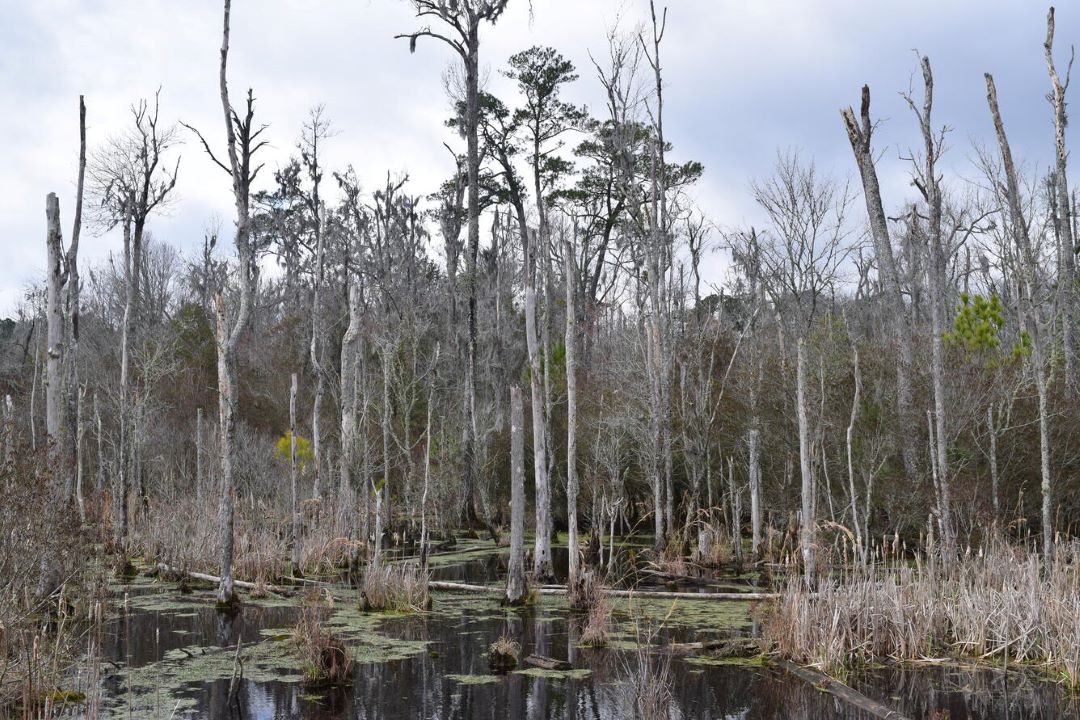
The “Ghost Forest” Phenomenon in America, What’s Happening?
Light House Denver – The “Ghost Forest” phenomenon is increasingly common along America’s eastern coast, particularly near Chesapeake Bay and the Atlantic. Dead cedar and pine trees now stand lifeless on increasingly salty soil, creating a haunting and alarming landscape.
Since the late 19th century, these coastal areas have gradually lost their vegetation due to seawater intrusion. Rising sea levels and shifting groundwater tables have allowed saltwater to reach tree roots, which are sensitive to salinity. As a result, the trees become stressed and eventually die from a lack of fresh water.
“Read More: Palo Alto Networks Expands Cloud in Asia-Pacific and Japan”
According to Keryn Gedan, a coastal ecologist at George Washington University, this transformation is largely driven by global climate change, which accelerates saltwater intrusion into inland areas.
Although this change may seem destructive, the transition from forest to marshland is not entirely negative. Salt marshes offer several important ecological benefits. They absorb carbon dioxide, provide habitats for wildlife, and serve as natural buffers against storms.
“These marshes store vast amounts of carbon and serve as effective coastal defenses,” says Marcelo Ardón, an ecologist at North Carolina State University.
However, not all new marshes can match the carbon storage capacity of the forests they replace. For example, swamp forests dominated by bald cypress and Atlantic white cedar in the Albemarle-Pamlico Peninsula store more carbon than the newer marshes.
When saltwater floods an area too quickly, marshes don’t have time to form. Instead, the land can turn into lifeless mud or be overtaken by invasive species such as Phragmites, a non-native reed that crowds out native vegetation and disrupts local ecosystems.
Since 1985, about 11% of forestland in the Alligator River National Wildlife Refuge has transformed into marsh. Around 150 square miles of forest near Chesapeake Bay have disappeared since the mid-1800s.
Scientists emphasize the urgency of addressing climate change and slowing sea level rise. Still, as Stephanie Stotts from the University of Maryland notes, “We’re still 50 years behind in seeing the full impact.”
“Continue Reading: The Importance of Developing Problem-Solving Skills in Children”